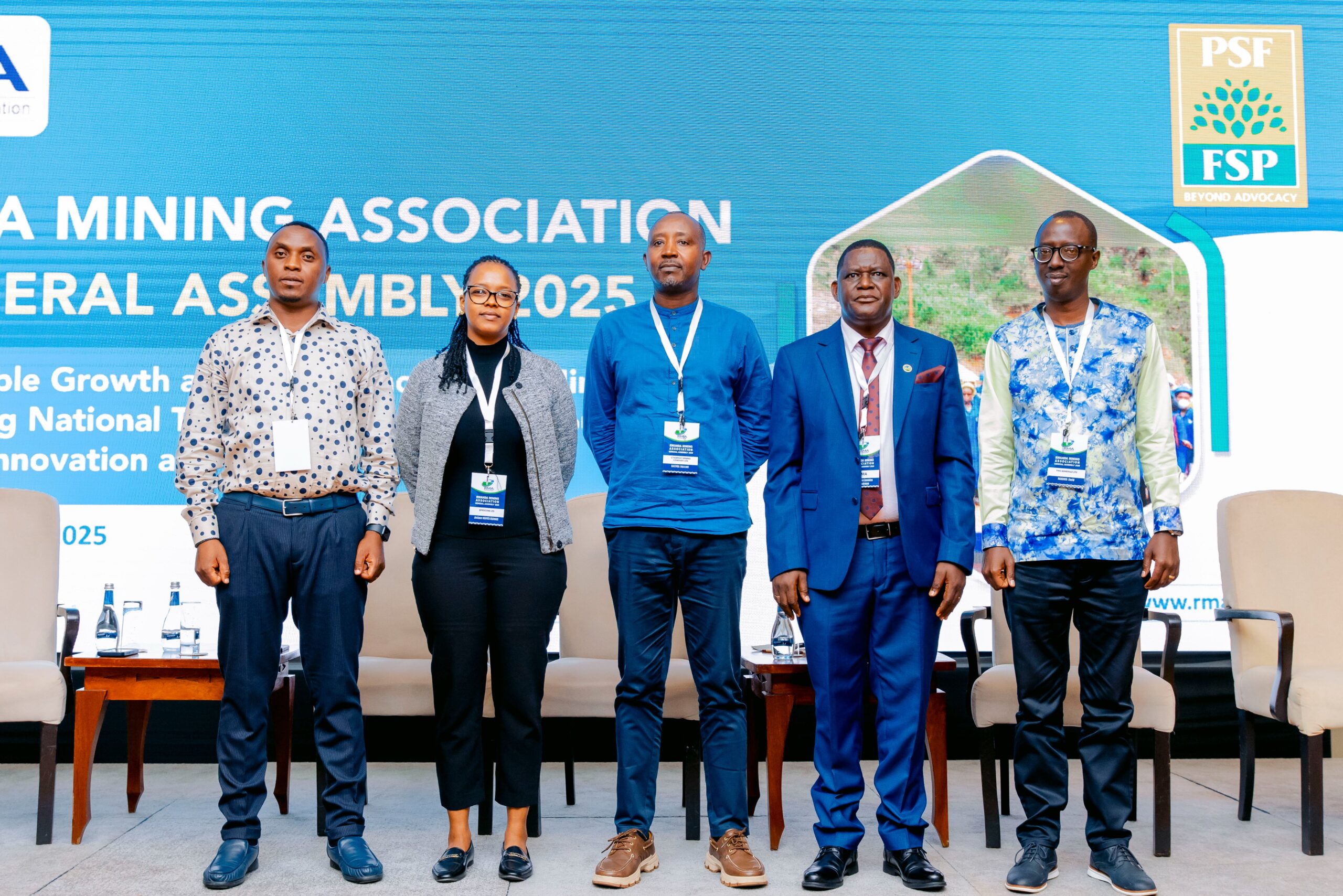Rwanda Mining Association (RMA) has unanimously elected Innocent Kagenga as the new chairman of the organization who committed to advancing the use of technology in driving the mining sector to reach its 2029 goal of raising $2.17bn in revenues by 2029.
Kagenga replaces the former chairman and business tycoon, Jean Malic Kalima who has served the organization as the third chairperson since the establishment of RMA 16 years ago.
Kagenga was elected to the position during the annual General Assembly (AGM)2025 held January 10, 2025; and at a time when the sector has been tasked by the government to up their game by moving from traditional to modern techniques of mining to explore the vast mineral potential that the country holds but only 30-40 per cent of the mineral deposits exploited.
Available data shows that Rwanda was the world’s 3rd largest coltan producer in 2021 with 270 tons per annum behind DR Congo and Brazil.
Rwandan coltan mines are believed to produce the world’s best quality reaching up to 60% Tantalum oxide- Ta2O5 (used in optical glass, fiber, and other instruments).
Global mining reports show that most mineral deposits in the region are in the DR Congo, and some argue that Rwanda depends on the neighboring countries for its mining sector however RMA and Rwanda Mining Board (RMB) believe otherwise.
Donat Donat Nsengumuremyi, the RMB Mining Extraction & Inspection Division Manager says that there is a lack of awareness about the presence of minerals in Rwanda due to historical aspects of the country where mining was mainly done by colonialists and foreign corporations, and lack of awareness among citizens.
Nsengumuremyi argues that the geological structure of Rwanda and its neighboring countries (Uganda, DRC, and Burundi) have some minerals in common (coltan, cassiterite, wolfram) but there are some gemstone minerals (lithium, beryllium, etc.) that are specifically in larger quantities in Rwanda.
There are currently 150 mining companies and cooperatives around the country and the most activity is seen in the Southern and the Western Provinces, with the districts of Rulindo, Rutsiro, Muhanga, Kamonyi and Rwamagana are among the top mining areas while Gisagara and Kirehe have comparatively lesser activity out of the 30 administrative districts in the country.
Though Rwanda is home to mineral deposits spread across every district in the country, RMB says that Rwanda lacks updated mining technology and thus a need for investment in tech to be able to explore the minerals 100 percent.
Taking up his new role, with a new team of executive leaders, Kagenga said that the aspect of technology is priority number one on his desk.
“I and my committee will focus on use of technology and this means that all miners will have to be on-boarded (in terms of skills) to move our profession from artisan to modern mining,” Kagenga said.
While this could happen in Kagenga’s 4-year- mandate the issues of skills gap, lack of modern technology and safety measures in the mining sector and welfare are considered, among others, the largest challenges that Rwanda’s mining sector is facing today.
Kagenga said that this will be achieved by working with development partners and the Rwanda Private Sector but also focusing on key targets in the sector’s 5-year strategic plan.
Apparently, Kagenga finds prepared ground where through the support of development partners like Enabel (Belgian Development Agency), RMA has managed to train at least 3,000 miners, who have so far been certified as qualified personnel under the Recognition of Prior Learning (RPL) – a workplace learning programme for career advancement to reduce a gap of over 90% unqualified casual miners to be trained.
Rwanda established the University of Rwanda School of mining and Geology (SMG) and a mining engineering diploma program at the Integrated Polytechnic Regional College (IPRC Kigali) which have moved from hiring foreigners to using local academia to train young mining engineering students- with both combined graduating at least 350 to date.
The “Dream” Team:
In its 5- year-strategy plan, the mining sector is capitalizing on professionalization and mechanization to boost national and local entrepreneurship, enhance livelihoods, and promote integrated rural social and economic development.
This means achieving a target of increasing mineral export earnings from $1.5billion (2024) to $2.17billion by 2029.
Kagenga will lead a new committee with 1st Vice Chairperson, Usanase Josiane; Nsanzineza Ernest as the 2nd Vice Chairperson, and two advisors- Simpenzwe Leonidas and Ngoboka David who committed to advancing the association Rwanda and promoting Rwanda’s mining sector.
RMB Chief Executive Officer (CEO), Francis Kamanzi said that the new team must work double time to address the existing challenges so as to improve their current 3% contribution to Rwanda’s GDP.

